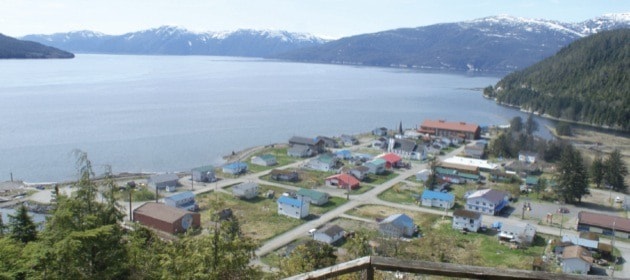For husband and wife Chester and Mary Moore, the dawning of the property taxation era in the Nass Valley means hope that the dirt roads in their home town of Gingolx will soon be paved, although they say that other community members do not agree with paying property tax.
“It's something I think we understand that we need in order for us to get proper facilities in our reserve, like a paved road and stuff like that,” said Moore, who has worked most of his life as a master carver of drums and household merchandise.
First it was sales taxes and then income taxes and now it’s property taxes as the Nisga’a Lisims Government works on establishing revenue sources needed to run and operate their nation.
And as Nisga’a Lisims officials toured the four main villages of the Nass Valley earlier this year with officials from the BC Assessment Authority, there’s a growing expectation of having those revenue sources increase.
Nisga’a Lisims hired the assessment authority to do property assessments throughout the valley, the basis upon which property tax rates will be set.
Legislation passed earlier this year by the provincial government will also enable the Nisga’a for the first time to levy taxes on both property and on industrial projects planned for the Nass Valley area and Nisga’a lands.
Taxation is becoming particularly crucial for the Nisga’a. Although payments from the federal government arising from the treaty implementation in 2000 are coming to an end, Nisga’a officials are downplaying any connection.
The taxation level is based on a rural categorization of land near the treaty area and the taxation area takes in the entire 2,000 square kilometres of treaty lands.
“They were talking about $300 a year or something like that,” said Moore of a meeting with Nisga’a government and B.C. Assessment official about the general amount of tax a homeowner would pay in Gingolx.
Moore and his wife, like many Nisga’a, are living in homes built through village governments and now have possession of them, making them responsible for property taxes.
According to Nisga'a Lisms, the government estimates that “the vast majority of residential properties have assessed values in the range between $50,000 and $100,000.”
The total value of the 750 residential properties in the valley is $50,400,000 and the total value of business properties is $55,388,400, according to BC Assessment.
General manager of the Sii T'ax Development Corporation in Gitlaxt'aamiks (New Aiyansh), Floyd Stevens, said his company is ready to face the taxman.
“It was rolled out pretty good,” said Stevens. “Everybody knew it was coming. We knew we had to cross this bridge some time, and Nisga'a Lisms Government had community consultation in each village just to let everybody know.”
With Nisga’a citizens first having to pay sales taxes and, as of two years ago, income taxes, a property tax isn’t completely new.
“We have been paying income tax since Jan. 1, 2013. We were probably the first First Nations people to pay income tax. So we have two years under out belt for that.
“It's probably history-making, I'd think,” Stevens added.
Stevens, as does Chester Moore, looks forward to improved infrastructure that has not been available in the past. Like many First Nations, the Nisga'a, before their treaty, have relied on federal payments under the Indian Act for basic services.
Nisga’a Lisims Government president Mitchell Stevens speaks of the potential which now exists because of home ownership. “An effective system of home-ownership and property taxation are essential to the future development of Nisga’a Lands and unlocking the trapped value that individual Nisga’a citizens have in their homes,” he said by email. Homes can be sold and mortgages obtained.
According to Moore, himself an elder, not everyone at the town hall meetings was onside with the idea of property taxes, but he said it was mainly the older individuals who are pushing back.
“They misunderstand the systems now that we are in self-government and have the big change in our reserves,” said Moore.
And for home and business owner Lorene Plante in Gitlaxt'aamiks (New Aiyansh), her assessment was a surprise, $110,000 less than an independent assessment she had done on her property several years ago.
But the government is reassuring residents like Plante.
“It’s important to remember two important points: first, that these assessments were carried out by the BC Assessment Authority which conducts all property assessments independently and in accordance with how it assesses property values through-out the province. Second, these are only tax assessments which do not finally determine the market value of their property,” said Stevens.
The extent to which hopes for improved roads will be realized depends on how the next Nisga’a Lisims budget rolls out. Transfer payments to villages have yet to be decided. “The revenues to Nisga’a Nation in respect of property taxation are part of the overall goal of Nisga’a Nation to become more self-reliant,” said Lisims president Stevens.
